Once for all let´s sort out all the questions you might have about kites and aerodynamics. What the hell is angle of attack, what is drag, why is a thin profile faster than a thick profile? What´s the benefit with a curved canopy? What is aspect ratio? Read this post to the bottom and you´ll get a much better understanding about kites and aerodynamics in general!
Why do kites fly and pull?
The reason to why we can possibly kitesurf is thanks to the power generated in the kite, so how is this power “created”?
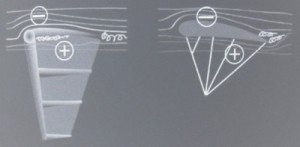 When wind hits the kite, the airflow divides and some passes over the kite’s extrados and some passes under the intrados. The airflow on each side of the kite has encounters a different shape and is forced to take different paths. The airflow must then cover two different distances, but arrive at the same time. The airflow on the extrados has to travel further and faster than the air under the intrados. The airflow passing under the kite slows slightly which increases its pressure, so it “pushes” on the intrados of the kite. The airflow over the kite is accellerated so it exerts less pressure, creating a suction that “pulls” on the extrados. These toe forces combine to create the aerodynamical force on the kite. Because of the kite’s position perpendicular to the kite lines, the kite pulls against the kite lines. The kite will pull upward when positioned overhead, and pull us along when it is flown at a lower angle. Kites need to have a stream-lined airfoil shape to fly, and they need to be flown at an efficient angle between 15 to 25°
When wind hits the kite, the airflow divides and some passes over the kite’s extrados and some passes under the intrados. The airflow on each side of the kite has encounters a different shape and is forced to take different paths. The airflow must then cover two different distances, but arrive at the same time. The airflow on the extrados has to travel further and faster than the air under the intrados. The airflow passing under the kite slows slightly which increases its pressure, so it “pushes” on the intrados of the kite. The airflow over the kite is accellerated so it exerts less pressure, creating a suction that “pulls” on the extrados. These toe forces combine to create the aerodynamical force on the kite. Because of the kite’s position perpendicular to the kite lines, the kite pulls against the kite lines. The kite will pull upward when positioned overhead, and pull us along when it is flown at a lower angle. Kites need to have a stream-lined airfoil shape to fly, and they need to be flown at an efficient angle between 15 to 25°
 When the speed of the wind (S) over the increases, its pressure (P) decreases (S+ = P-). A negative pressure is then exerted on the surface of the profile which will lift forward.
When the speed of the wind (S) over the increases, its pressure (P) decreases (S+ = P-). A negative pressure is then exerted on the surface of the profile which will lift forward.
When the speed of the wind decreases on a profile (S-) the pressure increases (P+), which pushes the profile. The forces exerted with pressure represent about 25% of the total power exerted on the profile. The forces of suction represent about 75%. Just like an airplane wing, a kiteboarding kite flies thanks mostly to the decrease of pressure on its upper side.
The force produced vary according to the angle between the kite and the wind. The image above show the passage of the air stripes according to the angle between the kite and the wind (angle of attack). The larger the angle of attack, the greater the turbulence.
TRACTION WORDLIST
It is the line that passes through the center of the kite’s profile. This line defines the angle of attack and the width of the profile (the dotted line)
A: The lift
This is the force created by the passage of the air on the profile of the kite (arrow A).
C: The drag
This is the force created by the friction of the air on the kite and of the wake created as the wind passes over the profile. This force always moves in the same direction as the wind arrives at the kite (arrow C)
B: The aerodynamical force
This is the total amount of force created on the kite by the lift and by the drag. Designers are of course looking for ways to reduce the drag in favor of the lift, which will conequently create upwind performance (arrow B)
D: The weight
This is the force exerted by the weight of the pilot when he is on land. The resistance of the board when the kiteboarder is in the water can be added to this force (arrow D).
The angle of attack
This is the angle between the cord of the kite and the wind. Changing the angle of attack affects the power of the kite. You change this angle by using the bar or the trim system fixed on the leader line. With a small angle, the profile creates sufficient force for the kite to stay in the air. With more angle, the kite powers up more. With too much angle, the drag becomes stronger and the kite is pulled backwards, also known as backstalling. The image to the left is only an example. The forces vary according to the profile of the kite, the type of kite (foil or inflatable) and the angle of attack.
KITE CHARACTERISTICS
Size of the kite
The kite’s size is given as the measurement of the kite’s flat area. The size area is measured in square meters. The kite’s size (area) is an indication of its power. The size of the kite is not only factor that affects power, there is also shape, design, and aspect ratio etc. But size is the main indicator of power. Larger kites have more power than smaller kites. The kite’s power is proportional to the size of the kite. A 6m kite has half the power of a 12m kiteof the same shape and design.
This is the curve of a kite as seen face on. This curve gives the stability to the kite when it is moving because the curved canopy channels the air. A flat shape needs stabilizers on each tip to fly correctly.
The profile
The profile affects the performance of the kite. A very flat profile is very fast, but sensitive to wind changes or to the action of the pilot on the angle of attack.
A very curved profile makes the kite stable and smooth to sheet in and out with the bar. Yet this type of profile is very slow because it generates extra drag.
The proportion between the surface area of the kite and its length (A) is called the aspect ratio. Kites with a high aspect ratio can fly faster and point closer to the wind, and glide well in jumps. Lower aspect ratio kites are easier to fly, relaunch quickly, and are more stable in gusty winds. As a beginner you should look for a kite with low aspect ratio since it’s much more foregiving and easier to progress with.
The pitch
This is the ratio between the position of the front line connection point and the center of effort of the kite (the line where the power of the kite is exerted), The pitch influences the balance between the kite and its abilities to sheet in or out by changing the angle of attack. According to the profile and the type of kite, the center of pressure is either more or less positioned at the front, which influences the position at the front lines connection knots.
Power of the kite
There are two main factors that affect the kite’s power (F). The size of the kite (A = area) and the relative windspeed (V). What is important to note is that the size of the kite has a proportional affect on the power. Double the size and get twice the power. But this is not the case when it comes to the wind. Double the windspeed and you get four times the power. The power of the kite is therefor equal to the square of the wind speed multiplied with the area of the kite.
F = V² * A
The relative wind speed (V) is the result of the true wind, plus the induced wind (velocity wind). The relative wind is also known as apparent wind. The power (F) is what creates traction. This is most noticeable either when the kite passes in the middle of the wind window, when we fly the kite to make a jump, or simply when we have little speed once on the board.
The aerodynamical forces change with square of the velocity (double velocity = quadruple the lift).
A kite does not pull much when it flies steadily at the edge of the of the wind window (above your head or on the sides). But as soon as it gains speed, either by passing through the power zone or because the pilot is in motion, then its power greatly increases.
When the pilot and the kite stay in a fixed position, and the wind speed remains constant, then the kite will have a steady pull. If you move the kite, or the pilot then the power will change. Kites and pilots are usually in motion so the power of the kite is constantly changing.
Still don’t get it? Check out this page The Basics of Kite Power – How Does a Kite Create its Power? for about the same information, but with other words and pictures.
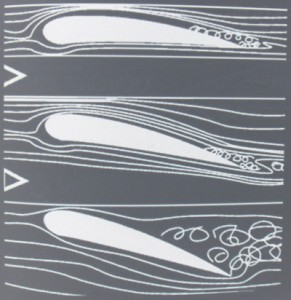

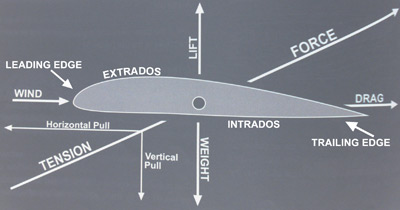

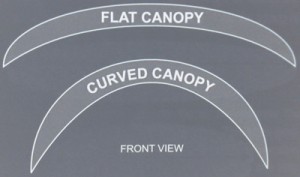


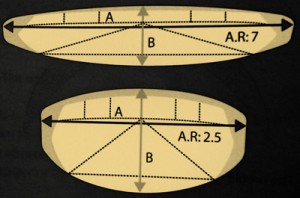





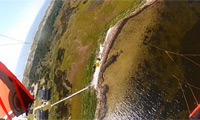

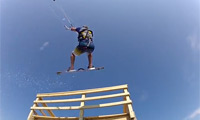
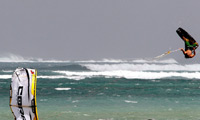
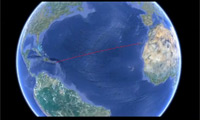




3 Responses
Hello,
You are using the Bernoulli’s principle to explain the lift of a wing. But this is actually a small part of the total lift a wing creates. Newton’s law of motion is actually more important here. This law states that a force is required to make something move in a different direction. The wing bends the flow path of the air, for which a force is required: the lift.
Also see: https://en.wikipedia.org/wiki/Lift_(force)
Posted on December 14th, 2011 at 7:46 am
Thanks for pointing that out Njipep. I guess what I explained is more in line with the aerodynamical force https://en.wikipedia.org/wiki/Aerodynamic_force.
Btw, can you explain what happens when a kite is backstalling? Is it due to the fact that the drag is overcoming lift? Or is it because the lift is not pointed up towards the sky enough, but more in a direction that is parallel to the surface?
Posted on December 14th, 2011 at 2:44 pm
Thanks for the explanation. We should have more of this. I also particularly like the page at :
https://kitesurfingschool.org/kite.htm
however, there is a lot of terminology that remains unexplained.
For example, what is “kite performance” exactly?
And, is a “fast kite” equal to “quick turning” ?
Also, is “low end” the ability to fly in low wind, or, a kite that remains “close” to the power zone, and thereby generates more power on average? (well, may be this is another question).
Your post makes me wonder:
1. Is the kite pull generated by the kite surface area, or the PROJECTED surface area? In other words, a kite with a flat canopy generates more pull?
2. The page on kitesurfingschool defines aspect ratio as “Aspect Ratio is approximately Span/Chord of the kite or more exactly Span*Span/Area” . This makes more sense as it results in a ratio, instead of your definition Span/Area. But …. what is Span?
Is that the distance from tip to tip, when the kite is pumped up, or when it is laying flat on the ground??
thanks anybody who can help me out.
Posted on January 5th, 2012 at 4:19 pm